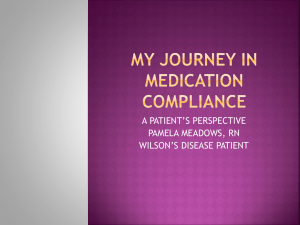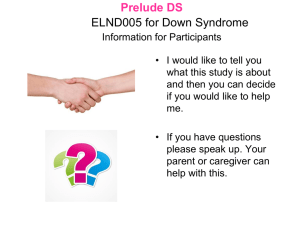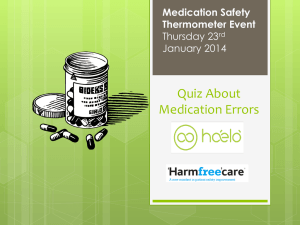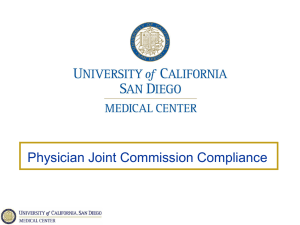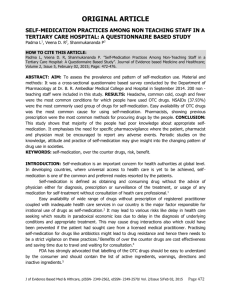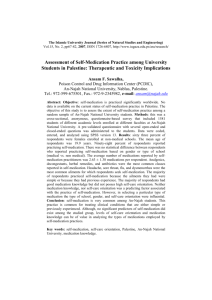Respite Care Workshop - ARCH-NRN
advertisement
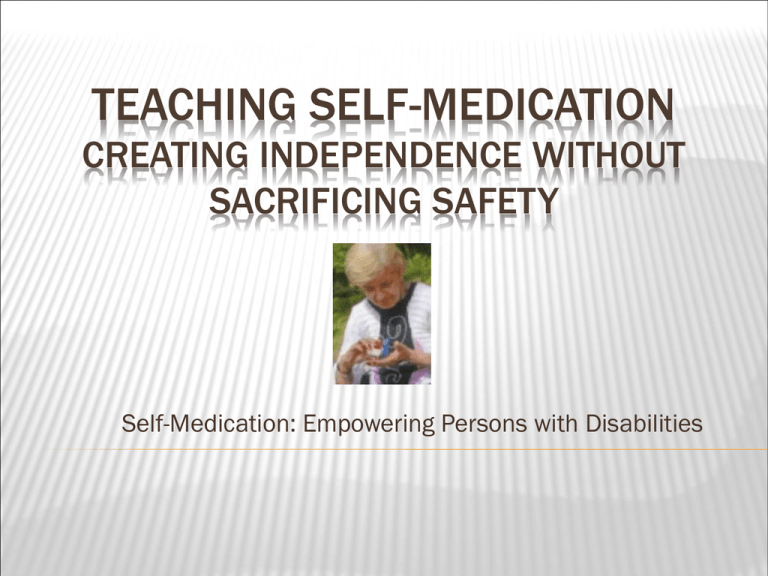
TEACHING SELF-MEDICATION CREATING INDEPENDENCE WITHOUT SACRIFICING SAFETY Self-Medication: Empowering Persons with Disabilities IT IS POSSIBLE Proverb - “Nothing will be attempted if all possible objections must first be overcome.” Proverb - “Difficult things take a long time, impossible things a little longer.” The Bible - “All things are possible to him that believeth.” WHO ARE WE AND WHY ARE WE HERE? Kathleen Ward, BSW, MPP Saundra Brown-Asante, BA, RN, DN/CM The Department of Human Resources Project Home Program, a residential program for mentally ill and disabled adults, is giving their residents a greater sense of independence and autonomy while ensuring safety in a program designed to teach residents to self-medicate. What are your expectations? Administer medications safely and as prescribed by the health care professional . Provide support/personal assistance to meet the needs of the individual who needs assistance to medicate in a way that promotes optimum dignity and independence. Let’s talk about ways to administer medicines to your loved-ones or patients. • MEDICATION ADMINISTRATION WHAT IS SELF-MEDICATION? • • Self-medication is having the ability to take medication at the correct time, using the correct route, in the correct dose with the support of a caregiver or a caregiver’s back up who can offer physical assistance and/or reminders. Self-medication means that at a minimum the patient or loved-one identify a pill by size and/or color, know when they are to take pill and why they are taking it. ADMINISTERING MEDICATION Independently – without assistance Implies that the individual has the physical and cognitive ability to take medications without any support or assistance from others. ADMINISTERING MEDICATION With Assistance or Supervision - When an individual can safely take medication with physical assistance, reminders or supervision only. Implies that the individual has some minor physical or cognitive limitation, but only to the point of requiring some cueing and coaching or minimal supervision. ADMINISTERING MEDICATION Given by Caregiver – Implies the individual does not have the physical and/or cognitive ability to safely administer medications even with physical assistance, reminders or supervision. SELF-MEDICATION - A GOOD IDEA! Frees up your time Provides an extra layer of safety Increases safety when substitute caregivers are present Empowers by increasing independence Builds feelings of self-worth WHO IS CAPABLE? • • • • • • Persons with developmental disabilities Persons with mental illness Persons with physical disabilities (visual, hearing, ambulating) Persons with chronic illness Persons who are frail or elderly Persons with dementia WHO IS CAPABLE? And children DEVICES THAT HELP Pill boxes Totes Bubble packs Unit dose Alarms Pictures 13 MORE DEVICES Electronic Pill Dispensers Braille bottles Pre-filled syringes Creative use of markers, pictures of medications, Charts 15 MEDICATION SAFETY Medications must be kept in a safe manner at all times. This protects the individual and other household members. COACHING AND CUEING COACHING – HANDS ON CUEING - VERBAL COACHING Sit beside individual and show how to count the correct pill(s) for Pill Box. Help place a small amount of ointment on individual’s finger and assist hand to wound. Wash individual’s hands before touching medicin.e EXAMPLES CUEING Remind individual to fill pill box. “Is it time to take you fluid pill?” “Lunch is ready. Do you have your medicine” WHAT METHOD WILL YOU CHOOSE? How old is the person? Are they capable of taking their medication independently? With assistance? Is eyesight impaired? Do they understand why they take each medication? Will others understand the method? Is the method flexible? METHODS CONT. Associate the medication with a meal or event rather than a time of day. You can “re-label”. Use a pill organizer. Electronic? Organizes medicines on shelf in order of use. Written reminders in places the individual will see it. Use personal markers or colors on top of the bottle. METHODS CONT. Braille wording on bottle top. Change pill bottle shapes or sizes for each medicine. Rubber bands on bottle to indicate how many doses or pills need to be taken each day. GET FAMILIAR WITH YOUR RESOURCES There is help out there Get to know your pharmacist Ask your doctor questions such as: Why is the individual taking this medication? What side effects should I look for? How will I know when it is working? How will I know when it is not working? When will I see the effects of this medication? Does the individual need blood tests while on this medication? Will this medication interfere with other meds. the individual is taking? Are there any OTCs he/she can’t take? Are there any vitamins or herbal supplements that he/she can’t take? SCENARIOS REMEMBER There is no wrong way to develop a system as long as it meets physician orders’ and provides the necessary medications when they are needed. Involve your family members or other staff in the planning process. It can take weeks, months or longer for an individual to learn to self-medicate and that’s OK! QUESTIONS AND ANSWERS

